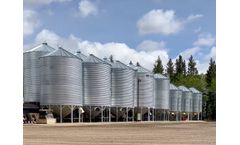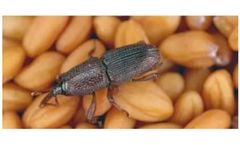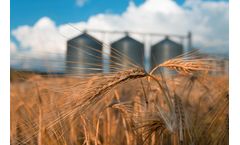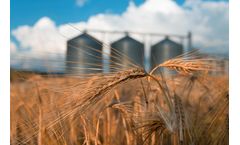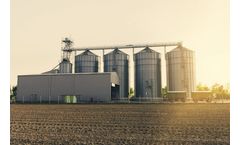Refine by
Grain Storage Articles & Analysis: Older
28 articles found
These devices facilitate precision farming, enabling farmers to optimize resource allocation, minimize waste, and increase productivity through data-driven decision-making. Packaging and storage: Plastics contribute to efficient post-harvest handling, packaging and storage of agricultural products. ...
The evolution of bin management systems has been marked by continuous innovation aimed at improving the efficiency, reliability, and profitability of farming operations. Traditional methods, which largely depended on manual labor for monitoring and managing stored grain, have gradually given way to more sophisticated, technology-driven solutions. These advancements, including automation, are ...
Seamlessly connect to your grain bins to help manage grain quality and time It’s been a tough growing season and growers have been working hard for every bushel this year. ...
Most of us have heard of “Internet of Things (IoT)” – the interconnected cloud and devices, like our smart watches, that we use everyday to make lives easier. But what do these smart solutions or the cloud have to do with farming? Everything, according to Jeffrey Poppel, senior product manager for Decisive Farming by TELUS Agriculture. ...
“With this software, important information such as grain storage are no longer just on a piece of paper or whiteboard,” says Donald. ...
The loss of grain in storage relating to or resulting from living things such as insects, pests, rodents, and fungi and form physical rather than biological such as temperature or moisture lead to global losses that exceed 80 million metric tons in grain storage. ...
Ideally, stored grain should be able to match freshly harvested grains in terms of nutrition and appeal.Poor quality storage not just threatens global food security, a growing concern in a world with expanding populations and energy demands, but also comes with a significant financial cost. Mazie crops lost to poor storage ...
The process is crucial within many aspects of agricultural food production, packaging and storage in order to ensure that food products last longer.Gas Sensing within AgricultureIncreased consumer demand for food products is leading to pressures on food production and will require increased labour and efficiency by farmers around the world. ...
Find out more about gas sensing for vertical farming: https://edinburghsensors.com/news-and-events/perfect-environment-vertical-farming/ Detecting Spoilage of Stored Grains Over 50% of stored grains are lost after harvesting due to spoilage caused by mould or insect infestation, which could be combatted by the early detection of spoilage with gas sensors for CO2 ...
Therefore, controlling the temperature and moisture levels in grain storage is crucial for the overall quality and edibility in these stored grains. ...
Despite the need for additional food, it is estimated that 50-60% of grain is lost after harvesting, at a cost of about $1 trillion per year.1 One of the major reasons for lost grain is spoilage due to mould or insect infestation during storage.2 To provide a constant supply of grain year-round, after grains are ...
Objective: High Lea Farm in Dorset provides 125kw / hr to the grid and also provides 147kw of thermal heat to local butchers, a grain drying store, and also an old schoolhouse. Site background: Mixed farm based project. 125kw electricity. 147kw heat/thermal. Site feedstock: Slurry Fodder beet Farmyard manure Site clearance The initial stage of this project was the site ...
And the continued wet weather means that now high and variable grain moisture levels are presenting problems with grain handling and storing. ...
Poultry breeders spend a lot of time focusing on finding chicken feed ingredients that provide good nutrition for the flock. Modern farming methods have introduced the ability to enhance the nutritional properties of chicken ingredients with supplements and additives. This benefits both farmers and feed producers or producers. High quality feed additives can improve the overall economic benefits ...
When the World Food Conference of 1974 first defined food security it meant that basic food products should be available, at a stable price, for all people of the world. The concept of food security evolved over time as we began to learn more about the environmental impact of food production. The WFC expanded their meaning of food security to explain that accessible food should be safe and ...
Over the past year in IRP, we have evaluated hundreds of companies and tested dozens in areas as diverse as grain quality and storage sensors, soil moisture probes and weather stations, drones and autonomous vehicles. ...
The system by which we grow and distribute grain is well over a hundred years old. In the early 1900s, with significant urban migration, came the need for an efficient way to transport crops from rural areas to city centers. This led to the development of a commodity system, in which growers brought their harvested grain to silos where it was mixed with their neighbors’. Growers were paid a ...
Therefore CO2 gas sensors are vital, such as the Boxed Gascard from Edinburgh Sensors, which guarantees optimum conditions for plant growth. Detecting Spoilage of Stored Grains Over 50% of stored grains are lost after harvesting due to spoilage caused by mould or insect infestation, which could be combatted by the early detection of spoilage with gas sensors ...
Every year we hear about tragedies and injuries in grain bins. Grain storage continues to get larger and large bins are used regularly on farms and commercial agriculture businesses. They are a necessary piece of equipment, but safety needs to be top of mind whenever entering a grain bin. Make safe entry a ...
Grain handling, storage and drying equipment is needed on many farms, large agriculture operations and some commercial businesses. ...


